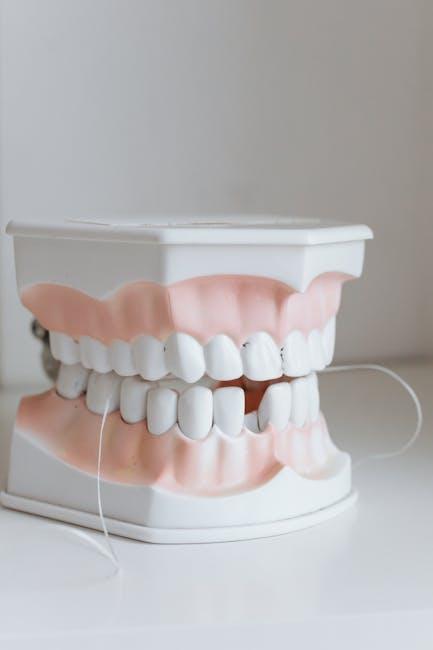Fluoride Ban Could Create Cavities For 1 Of Every 3 U.S. Kids – U.S. News & World Report
Fluoride has long been heralded as a crucial mineral in preventing tooth decay, especially in children. However, with increasing debates around the safety and ethics of water fluoridation, a potential fluoride ban could carry serious consequences. According to recent U.S. news reports, such a ban might lead to the creation of cavities for 1 out of every 3 U.S. kids.
Understanding Fluoride and Its Role in Children’s Dental Health
Fluoride is a naturally occurring mineral that strengthens tooth enamel, making teeth more resistant to decay caused by acids and bacteria. For decades, fluoride has been added to public water supplies, toothpaste, and various dental products, resulting in significant declines in childhood cavities (dental caries).
Why Is Fluoride Important for Kids?
- Prevents Tooth Decay: Fluoride helps remineralize enamel and reverse early signs of cavities.
- Accessible Dental Protection: Community water fluoridation provides a low-cost, population-wide defense against tooth decay.
- Reduces Dental Health Disparities: Fluoride benefits children in low-income and underserved communities who may have limited access to dental care.
The Potential Impact of a Fluoride Ban on U.S. Children
Experts warn that removing fluoride from water and dental products could sharply increase the incidence of cavities in children. The U.S. Centers for Disease Control and Prevention (CDC) estimates that about 1 in 3 children could develop more cavities without fluoride.
Key Risks Associated with Fluoride Ban:
- Spike in Childhood Cavities: Untreated dental caries can lead to pain, infections, and potential complications requiring expensive dental treatments.
- Increased Health Disparities: Children from lower socioeconomic backgrounds would suffer disproportionately without the protective community benefit of fluoridated water.
- Rise in Healthcare Costs: More cavities translate to more visits to dentists, emergency care, and a greater financial burden on families and healthcare systems.
Fluoride’s Proven Benefits Supported by Research
Extensive research underscores fluoride’s safety and effectiveness. According to the American Dental Association (ADA) and the CDC:
- Water fluoridation reduces tooth decay by about 25% in children and adults.
- Dental cavities in the United States declined by more than 60% since the introduction of water fluoridation in the 1940s.
- Despite minor controversies, fluoride usage in recommended amounts has no credible link to adverse health outcomes.
Fluoride Ban Impact at a Glance
| Factor | Before Fluoride Ban | After Fluoride Ban |
|---|---|---|
| Percentage of Kids with Cavities | ~33% | ~50%+ |
| Dental Treatment Costs | Steady | Significantly Increased |
| Dental Visits Due to Decay | Routine Check-ups | Emergency Care |
| Health Equity | Improved in Low-Income Areas | Widened Gaps |
Practical Tips for Parents to Protect Children’s Teeth Amid Fluoride Concerns
If a fluoride ban ever comes into effect, parents can take proactive measures to maintain their children’s dental health:
- Prioritize Oral Hygiene: Encourage brushing teeth twice daily with fluoride-free or prescribed toothpaste, flossing, and rinsing.
- Dietary Awareness: Limit sugary snacks and beverages which contribute to cavity formation.
- Seek Professional Advice: Visit dentists regularly for check-ups, sealants, and alternative cavity prevention treatments.
- Promote Water Safety: Use bottled or filtered water as recommended by dental professionals if water fluoridation stops.
Case Study: Communities Without Fluoride and the Rise of Cavities
Several communities turning off water fluoridation in recent years have documented increases in dental cavities among children:
- Portland, Oregon: After ceasing water fluoridation in 2013, studies later showed a rise in untreated cavities in local children.
- Calgary, Canada: Suspension of community water fluoridation correlated with higher dental decay rates within a few years.
First-Hand Experience: Parents Speak Out
Jessica M., a mother from Iowa, shares:
“Our town stopped fluoridating the water, and within a year, my son had two cavities. It shocked me because he rarely had issues before. Fluoride clearly made a difference in protecting his teeth.”
Stories like Jessica’s underline fluoride’s real-world impact on children’s dental health.
Conclusion: Why Fluoride Remains Essential for Children’s Oral Health
As the debate over fluoride intensifies, the evidence remains clear: fluoride is a safe, effective, and affordable tool preventing cavities in millions of U.S. children. A fluoride ban could create cavities for 1 of every 3 kids, leading to increased pain, health costs, and disparities.
Families, healthcare providers, and policymakers should prioritize maintaining fluoride access and promote informed dental care to secure brighter, healthier smiles for America’s children.
Stay informed, embrace good dental hygiene practices, and support community efforts that protect children’s oral health through fluoride — because healthy teeth lead to a healthier future.


